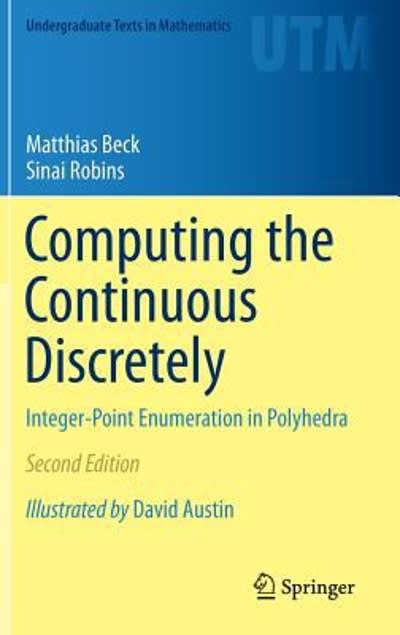Question
Problem 1. Use the formula for the derivative of ln(x) using the method of inverse functions to compute the limit as h approaches 0 of
Problem 1. Use the formula for the derivative of ln(x) using the method of inverse functions to compute the limit as h approaches 0 of (1/h) ln(1 + h). Next consider the quantity (1 + h)1/h. Find a continuous function that transforms the limit of (1/h) ln(1 + h) into (1 + h)1/h Use this to evaluate the limit as h approaches 0 of (1 + h)1/h. Finally, let h be 1/n for a positive integer n, and expand (1 + (1/n))n using the Binomial Theorem. For a given positive integer m, as n tends to , what is the limit of the mth summand of the Binomial Theorem expansion of (1 + (1/n))n ? This gives a series of fractions that converges to e.
Problem 2. A wire is bent into the shape of a parabola y = x2 . A bead slides along the wire, falling along the parabola in the first quadrant towards the origin. At the moment when the bead is at coordinates (a, a2 ), the distance from the bead to the origin is decreasing at a rate of b, i.e., increasing at a rate of b. Compute the rates of change of both the x-coordinate and y-coordinate at that moment. Double-check your answer by comparing the ratio of these rates of change to the slope of the tangent line to the parabola at (a, a2).
Step by Step Solution
There are 3 Steps involved in it
Step: 1

Get Instant Access to Expert-Tailored Solutions
See step-by-step solutions with expert insights and AI powered tools for academic success
Step: 2

Step: 3

Ace Your Homework with AI
Get the answers you need in no time with our AI-driven, step-by-step assistance
Get Started


